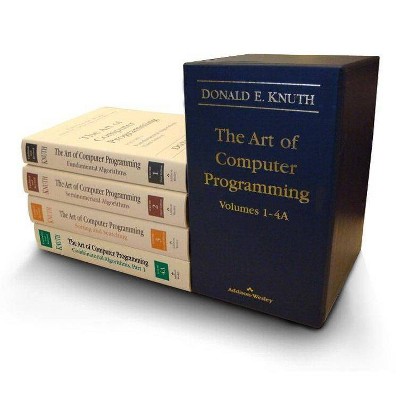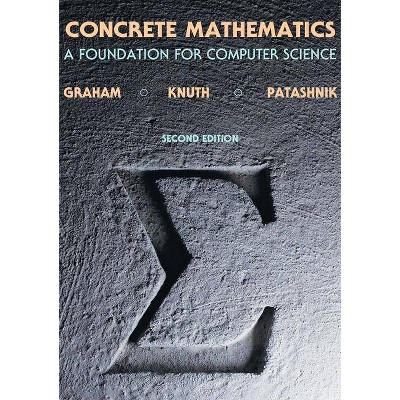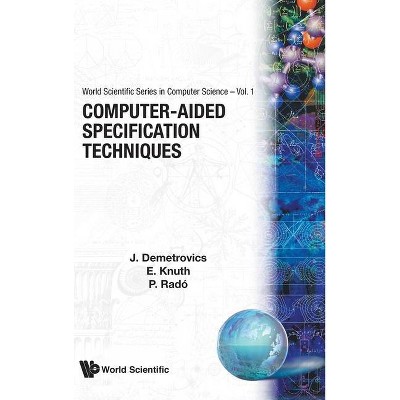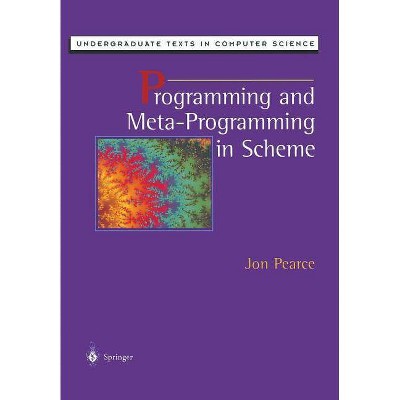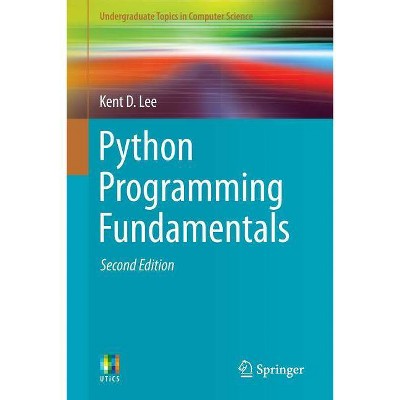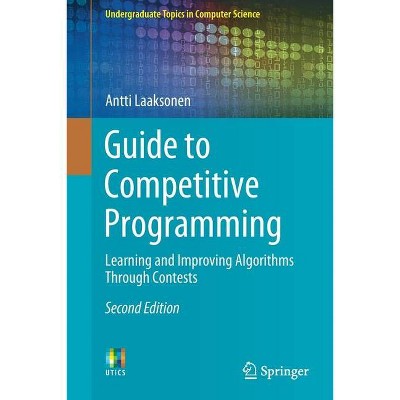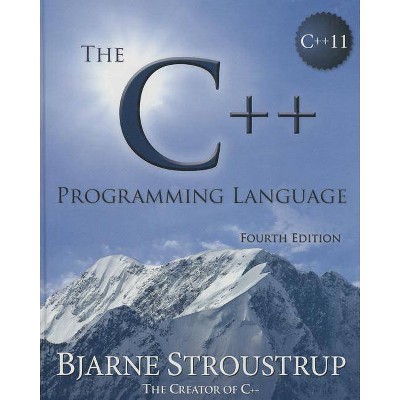The Art of Computer Programming - (Kluwer International Series in) 3rd Edition by Donald Knuth (Hardcover)
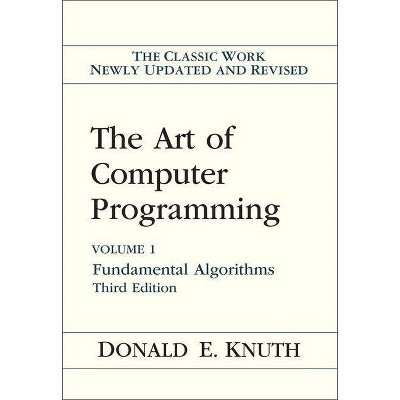
Similar Products
Products of same category from the store
AllProduct info
<p/><br></br><p><b> About the Book </b></p></br></br>The bible of programming theory and practice is being updated for the first time in more than 20 years. The book is concerned with information structures--the representation of information within a computer, the structural interrelations between data elements and how to work with them efficiently, and applications to simulation, numerical methods and software design.<p/><br></br><p><b> Book Synopsis </b></p></br></br><i>The bible of all fundamental algorithms and the work that taught many of today's software developers most of what they know about computer programming.</p> </p></i> -<i>Byte</i>, September 1995</p> </p> <i>I can't begin to tell you how many pleasurable hours of study and recreation they have afforded me! I have pored over them in cars, restaurants, at work, at home... and even at a Little League game when my son wasn't in the line-up.</i></p> -Charles Long</p> </p> <i>If you think you're a really good programmer... read [Knuth's] Art of Computer Programming... You should definitely send me a resume if you can read the whole thing.</i></p> -Bill Gates</p> </p> <i>It's always a pleasure when a problem is hard enough that you have to get the Knuths off the shelf. I find that merely opening one has a very useful terrorizing effect on computers.</i></p> -Jonathan Laventhol</p> </p> This first volume in the series begins with basic programming concepts and techniques, then focuses more particularly on information structures-the representation of information inside a computer, the structural relationships between data elements and how to deal with them efficiently. Elementary applications are given to simulation, numerical methods, symbolic computing, software and system design. Dozens of simple and important algorithms and techniques have been added to those of the previous edition. The section on mathematical preliminaries has been extensively revised to match present trends in research.</p> <br></p> Ebook (PDF version) produced by Mathematical Sciences Publishers (MSP), http: //msp.org</p><p/><br></br><p><b> From the Back Cover </b></p></br></br><p><i>The bible of all fundamental algorithms and the work that taught many of today's software developers most of what they know about computer programming.</i></p> <p>--<i>Byte</i>, September 1995</p> <p><i>I can't begin to tell you how many pleasurable hours of study and recreation they have afforded me! I have pored over them in cars, restaurants, at work, at home... and even at a Little League game when my son wasn't in the line-up.</i></p> <p>--Charles Long</p> <p><i>If you think you're a really good programmer... read [Knuth's] Art of Computer Programming... You should definitely send me a resume if you can read the whole thing.</i></p> <p>--Bill Gates</p> <p><i>It's always a pleasure when a problem is hard enough that you have to get the Knuths off the shelf. I find that merely opening one has a very useful terrorizing effect on computers.</i></p> <p>--Jonathan Laventhol</p> <p>This first volume in the series begins with basic programming concepts and techniques, then focuses more particularly on information structures--the representation of information inside a computer, the structural relationships between data elements and how to deal with them efficiently. Elementary applications are given to simulation, numerical methods, symbolic computing, software and system design. Dozens of simple and important algorithms and techniques have been added to those of the previous edition. The section on mathematical preliminaries has been extensively revised to match present trends in research.</p> <p/><p/><br></br><p><b> About the Author </b></p></br></br><p><b>Donald E. Knuth </b>is known throughout the world for his pioneering work on algorithms and programming techniques, for his invention of the Tex and Metafont systems for computer typesetting, and for his prolific and influential writing. Professor Emeritus of The Art of Computer Programming at Stanford University, he currently devotes full time to the completion of these fascicles and the seven volumes to which they belong.</p> <p/>
Price History
Price Archive shows prices from various stores, lets you see history and find the cheapest. There is no actual sale on the website. For all support, inquiry and suggestion messages communication@pricearchive.us
